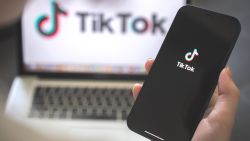Most days, Sophia Geringer follows a routine that would have been unthinkable to anyone living in New York City just a decade ago. She pulls out her phone, opens the Lyft app and hails a carpool ride to get to her office at Compass, a real estate startup, shaving time and stress from her daily commute.
On the weekends, Geringer often takes Lyft and Uber rides when going out with friends, especially at night when she prefers not to go on the subway. She relies on GrubHub and UberEats for quick meal deliveries and uses Amazon Prime for fast shipping of tissues and toilet paper.
At this point, Geringer says, she can’t imagine it any other way. “I don’t even think about it anymore,” she says. “I press a few buttons.”
Some might call this on-demand lifestyle an extravagance. For countless smartphone-equipped consumers, this is the new normal. Since Uber launched a decade ago, a long list of startups and some established tech companies like Amazon have invested heavily to deliver the promise of instant gratification to consumers. In that remarkably short period of time, the on-demand model has spread to all corners of our lives, upending how we work, shop and live.
There are now on-demand apps for getting groceries delivered to your home and having excess junk hauled away from your home. Apps for finding someone to walk your dog and babysit your kids. Apps for housekeeping and helicopter rides. Apps to order meals and even, for a few years at least, chefs to cook meals for you in your home. A whole new ecosystem of services built by busy tech workers with disposable income in big cities to streamline tasks for people just like them.
Yet, 2019 could prove to be a pivotal year that tests the durability of services that many consumers — not to mention an untold number of contractors whose livelihoods depend on these companies — now take for granted. Lyft, Uber and Postmates are all expected to go public this year. And as ubiquitous as some of these brands may seem, recent financials provided by some of them suggest a long road ahead to proving the sustainability of their businesses to Wall Street.
The year of the on-demand iPO
Lyft, which went public on Friday, said in a filing this month that it lost nearly $1 billion in 2018, more than any other US startup has lost in the year prior to its IPO. But it may not hold that dubious distinction for long. Uber said last month that it lost $1.8 billion in 2018. (Postmates has confirmed plans to go public, but has yet to release detailed financials.)
The newly disclosed financial figures for Lyft and Uber serve as a stark reminder that brand name on-demand services have achieved their level of ubiquity in large part because of outsized spending, fueled by unprecedented sums of venture capital. With billions raised in private funding, companies like Uber and Lyft expanded faster into new markets and enticed customers with artificially cheap fares.
What these companies haven’t done is show they are anywhere close to actually making a single cent in profit.
“The question here is whether public investors can sustain such large losses for a long time,” said Ilya Strebulaev, a finance professor at Stanford University who studies venture capital. “And likely the answer is no.”
Kathleen Smith, principal at Renaissance Capital, which manages IPO-focused exchange-traded funds, is more blunt in her assessment on the losses reported by these companies. “This is staggering what we’re seeing here. Staggering,” she said. “The profitless prosperity model doesn’t work in the public market.”
A spokesperson for Lyft declined to comment on this story, citing the quiet period required before an IPO. Representatives for Uber and Postmates did not immediately respond to requests for comment.
If newly public on-demand companies do inevitably face pressure from the public market to get out of the red, it could ultimately force them to choose one of two difficult routes: hiking prices on customers, or squeezing their workers. The latter may already be happening.
Uber, but for burning money
For years, the money just kept coming. Investors pumped billions into on-demand startups with the belief that mass adoption of mobile devices would lead to a fundamental shift in consumer demand for faster delivery of everything and anything. A funding arms race ensued. The more money a startup raised, the more it could offer promotions, expand into new cities and acquire customers before potential rivals.
In one three-month period in 2015, there were 116 funding deals for on-demand startups, adding up to more than $9 billion invested in the space, according to data from CB Insights, a research firm that tracks venture capital. Uber alone has raised more than $20 billion in debt and venture capital.
The investor craze around the on-demand model was strong enough that some startups felt pressure to go this route even if they didn’t believe it was right for them.
“There’s no question the general consensus at the time was on demand for everything,” said Ajay Prakash, cofounder and CEO of Rinse, a laundry pick-up and delivery service that launched in 2013. Prakash and his team were convinced a 24/7 on-demand model wouldn’t work for laundry. But, he says, “people we talked to, investors, smart people in the startup space, felt on-demand was the way to go.”
Rinse refrained from the on-demand trend. Many other startups bought in and later burned out. The long list of failed on-demand companies includes many that raised millions and received plenty of press: Munchery and Sprig (food delivery); Kitchensurfing and Kitchit (private chefs on demand); Sidecar (ride-hailing) and Shuddle (ride-hailing for kids). Wash.io, an on-demand laundry startup backed by prominent investors like Ashton Kutcher, shut down and had its assets acquired by Prakash’s company.
But the big players in this sector have only gotten bigger. As of this month, there are nearly two dozen on-demand startups globally that are considered unicorns, or private companies worth more than $1 billion, according to data from CB Insights. These include household names like Uber that launched in the wake of the recession, offering workers the dream of being their own bosses.
Fast forward to this week. On Monday, just days before the Lyft IPO, many Uber and Lyft drivers staged a protest in Los Angeles over wage cuts. Last month, two other large on-demand startups, Instacart and DoorDash, faced criticism from workers who said tips were being used to subsidize a minimum pay rate, resulting in lower overall wages.
And that backlash may just be the tip of the iceberg. In a research note earlier this month, Morningstar analysts noted that Lyft is “aggressively pursuing” self-driving cars because it understands this technology “may help the firm expand its margins.” Put another way: ditching drivers may prove to be a useful way to boost profitability in the long-term.
Lyft is not alone. Uber is also investing self-driving cars. Even Postmates has begun experimenting with robot delivers. Other on-demand companies are expected to follow suit. If venture capital was key to the success of the on-demand economy throughout this decade, having fewer workers to pay may be key to its success in the decade to come.



























